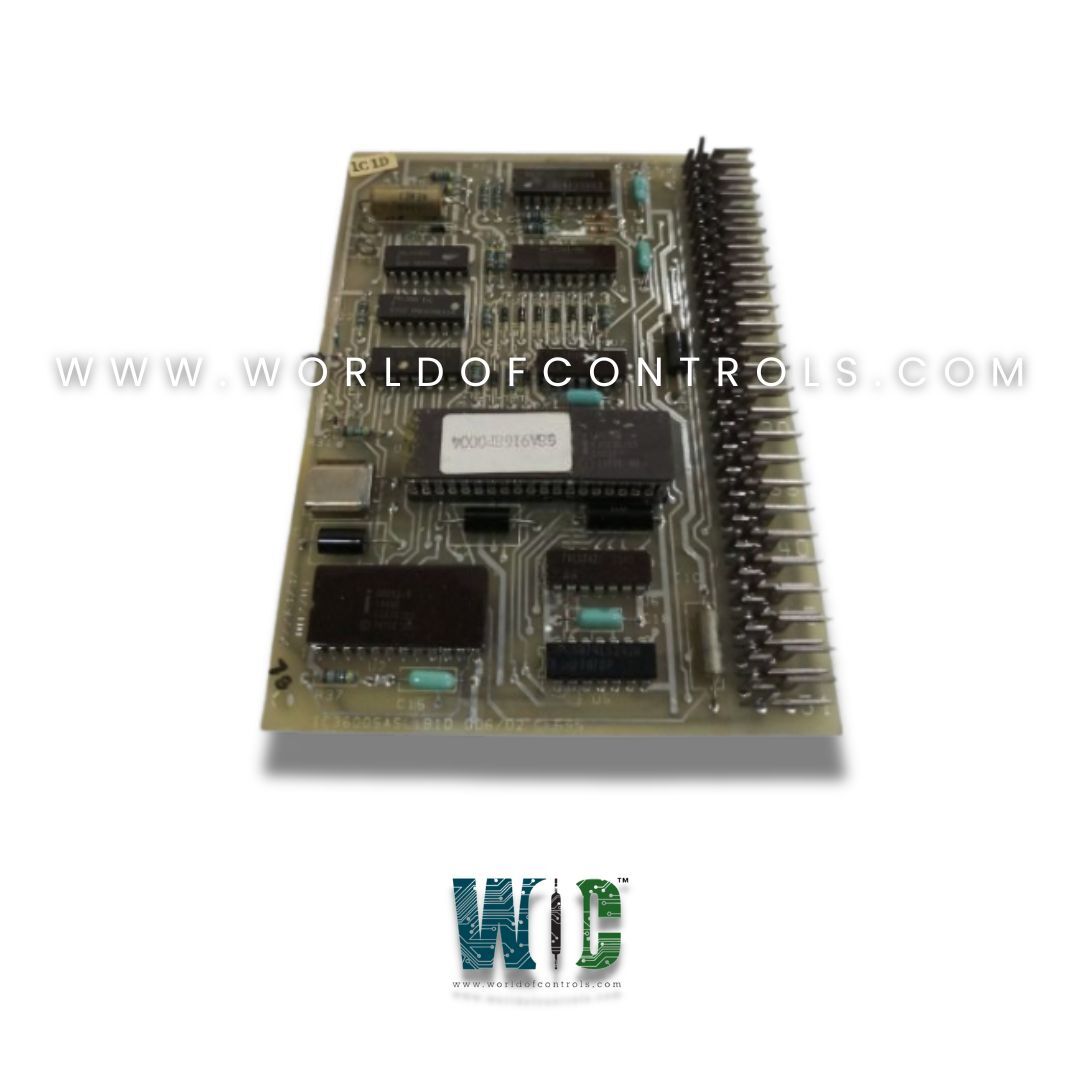
World Of Controls understands the criticality of your requirement and works towards reducing the lead time as much as possible.
IC3600SASC1C - Micro Synchronizer card is available in stock which ships the same day.
IC3600SASC1C - Micro Synchronizer card comes in UNUSED as well as REBUILT condition.
To avail our best deals for IC3600SASC1C - Micro Synchronizer card, contact us and we will get back to you within 24 hours.
Part No.: IC3600SASC1C
Manufacturer: General Electric
Product Type: Microsynchronizer Board
Availability: In Stock
Series: VersaMax
IC3600SASC1C is a Microsynchronizer Board developed by GE. It is a part of GE Mark I and II series. The primary function is to synchronize the frequency and phase angle to a common bus, ensuring stable and reliable power generation. It helps in avoiding damage to the electrical grid and machinery by aligning the generators' outputs in terms of voltage, frequency, and phase.
A synchronizer is a critical component in generator drive units, used to ensure that a generator is properly synchronized with the electrical grid before it is connected. This process involves matching the generator’s frequency and phase with the line frequency, allowing for a smooth and safe connection. The synchronizer automatically closes the generator breaker when the phase and slip relationships are within acceptable limits, ensuring the generator is safely brought online.
Synchronization is vital because improper synchronization can lead to serious damage to the generator, transformer, and associated electrical equipment. If the generator is not synchronized with the grid, the resulting electrical mismatch could cause mechanical stress, equipment damage, or even catastrophic failures. The ability to accurately synchronize generators to the grid before they are connected is therefore an essential aspect of power generation systems.
In the past, electromagnetic synchronizing relays were used in many systems. These relays provided a mechanical means of detecting the correct synchronization conditions. While they were functional, they had limitations in terms of reliability, accuracy, and the ability to handle more complex operations. Their performance could degrade over time due to mechanical wear, and they lacked the flexibility to adjust to changing system conditions dynamically.
Recently, a microprocessor-based synchronizer has been developed and tested in the field, offering significant improvements over traditional electromagnetic relays. The microprocessor-based synchronizer leverages digital technology, allowing for superior performance and enhanced reliability. It incorporates advanced algorithms and software that enable real-time monitoring and more precise control of synchronization parameters, making it more capable of handling complex scenarios and providing better protection to the system.
The WOC team is always available to help you with your Mark I and II requirements. For more information, please contact WOC.
What is IC3600SASC1C?
It is a Microsynchronizer Board developed by GE.
Why is synchronization important in power generation?
Proper synchronization is crucial because improper synchronization can cause mechanical stress, electrical mismatches, and significant damage to the generator, transformer, and connected equipment. It ensures a safe and stable connection between the generator and the electrical grid.
How does a microprocessor-based synchronizer work?
The microprocessor-based synchronizer works by receiving input signals from the generator and the electrical grid (via potential transformers). It processes these signals, converting them into square waves. The microprocessor then calculates the phase, slip, and rate of change, determining whether synchronization conditions are met. Once the conditions are right, it sends a command to close the generator breaker and connect it to the grid.